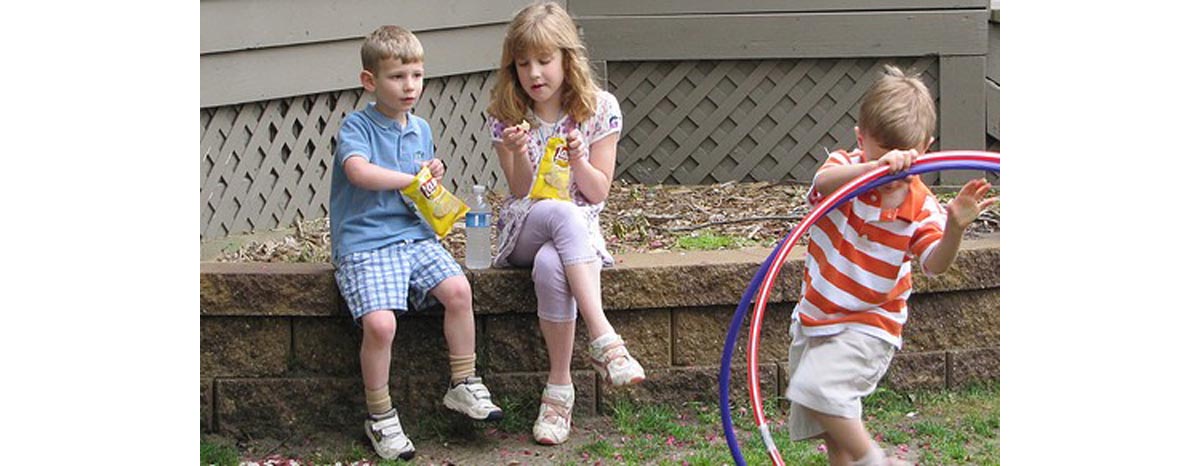Anorexia nervosa, a pathological aversion to food, and bulimia, a need to stuff oneself with food, have the highest mortality rates of any psychiatric condition. Up to 1 in 10 people who develops anorexia or bulimia eventually dies the disease. This figure does not even take into account that large number of anorexics and bulimics who die of health conditions secondary to their eating disorders, or the indirect killers.

The most common picture of anorexia or bulimia is a young adult, usually a young woman, or a teenage girl, who feels pressured to live up to ideas about beauty and fatness, or who seeks to control some aspects of their life when so much is beyond their control. But the sad reality is that anorexia and bulimia can even occur in infants and toddlers, although for entirely different reasons.
A Heart-Breaking, and Heart-Based, Condition in Infants and Toddlers
In trying to unravel the mystery of anorexia in infants, psychiatric researchers at the (US) Children's National Medical Center in Washington, D.C., measured the heart rates of healthy and anorexic infants in the presence of their mothers. The researchers found that when healthy infants were separated from their mothers, their heart rates, as one might imagine, went up and became more irregular — indicating the presence of stress. When anorexic infants were separated from their mothers, however, their heart rates went down and became more regular.
When the same researchers measured heart rates in toddlers who were introduced to a stranger, or who were placed on the opposite of the room while their mothers spoke with a stranger, they noted similarly unexpected changes in heart rate. Healthy toddlers showed symptoms of excitement when introduced to a stranger; anorexic toddlers showed few reactions at all. Competing with a stranger for the mother's attention similarly resulted in few changes in the anorexic child's heartbeat. It was as if anorexic children simply could not adapt to their changing social realities as they got less and less of the mother's attention.
Anorexia in Toddlers: Not Necessarily a Psychological Condition
Although anorexia in infants in toddlers and infants has been studied in terms of bonding with the mother, this does not mean that it is necessarily a psychological condition, and it certainly does not mean that it is in any way the mother's fault. Parents don't cause anorexia or bulimia, and children don't choose to develop these conditions, either. Anorexia is considered to be a physiological condition, caused by the "wiring" of the child's nervous system.
Infants, of course, do not develop bulimia, since they can't binge on food unless parents force-feed them. And even later in childhood, anorexia is a far greater problem than bulimia, although parents may not recognize it.
Recognizing The Symptoms Of Anorexia In A Child
In an infant or a toddler, it's not that hard to recognize symptoms of anorexia. The parent offers food, the child doesn't take it. Despite the parent's best efforts, the child may be labeled as suffering "failure to thrive," and the primary concern is ensuring weight gain by providing high-calorie foods to take advantage of the child's appetite when he or she is inclined to eat.

By the time a child is 5 or 6 years old, however, anorexia takes on a different dimension. Children may not eat, or they may exercise incessantly so that they do not put on weight.
The child's aversion to weight gain usually does not, in contrast to to anorexia in teens and adults, have anything in particular to do with their body image or societal ideals of beauty. Children simply don't want to eat, or if they do want to eat, they want to exercise, and they don't really know why. They don't diet. They don't consciously cut back on food. They just eat less.
Parents are tipped off to anorexia by gradually becoming aware of some of its unique symptoms:
- Kids who have anorexia may have unusual reactions to hamburgers. They may only want to eat hamburgers, or they may not want to eat them at all. The reason for this is that the heme- iron in hamburger and the gluten in wheat contain compounds known as mu-opioids. These compounds interact with reward centers in the brain. Scientists believe that anorexia is caused in part by unusual reactions to these opioids.
- Children who have anorexia often seem to have ADHD without the "H," that is, they have attention deficit without hyperactivity. They may act lethargic, and have difficulty concentrating. They may have difficulty making decisions. They may be irritable, and they may withdraw from friends and siblings.
- Deprivation of protein and calories results in a variety of physical symptoms, including dry skin, brittle nails, cracked hair, cold hands or feet, headaches, swollen glands, atrophy of the breasts in girls and testes in boys, low blood pressure, a slow heart rate, and constipation.
- Anorexia usually results in weight less than 85 percent of the weight expected for the child at a given age.
Anorexia in pre-teens usually can't be diagnosed by asking questions. Children who have anorexia usually are not obsessed with food, they don't experience weight loss (they just don't experience weight gain), and they don't think they are fat when others think they are thin. But one of the most surprising signs of anorexia in children is precocious puberty.
Puberty as the Body's Self-Defense Mechanism Against Anorexia
Some children who develop anorexia also go through puberty at an early age. Scientists believe that the growth spurt that occurs after puberty is part of the body's way of repairing the damage done by anorexia.
Some of the worst effects of anorexia are at least temporarily reversed by the growth spurt. Early adolescence, however, is no time to abandon efforts to treat anorexia. Untreated, teens often also develop habits of bulimia to meet the parental and social demands for eating while avoiding weight gain, and lifelong disability or early death may result.
As heartbreaking as it is, acknowledging the reality that even children too young to be aware of ideas about body image can develop eating disorders can help parents catch the symptoms earlier, leading to timely treatment.
- Chatoor I, Ganiban J, Surles J, Doussard-Roosevelt J. Physiological regulation and infantile anorexia: a pilot study. J Am Acad Child Adolesc Psychiatry. 2004 Aug. 43(8):1019-25.
- Sutoh C, Nakazato M, Matsuzawa D, Tsuru K, Niitsu T, Iyo M, Shimizu E. Changes in self-regulation-related prefrontal activities in eating disorders: a near infrared spectroscopy study.PLoS One. 2013. 8(3):e59324. doi: 10.1371/journal.pone.0059324. Epub 2013 Mar 19.
- Photo courtesy of clarkstonscamp on Flickr: www.flickr.com/photos/clarkstonscamp/4578444210


Your thoughts on this